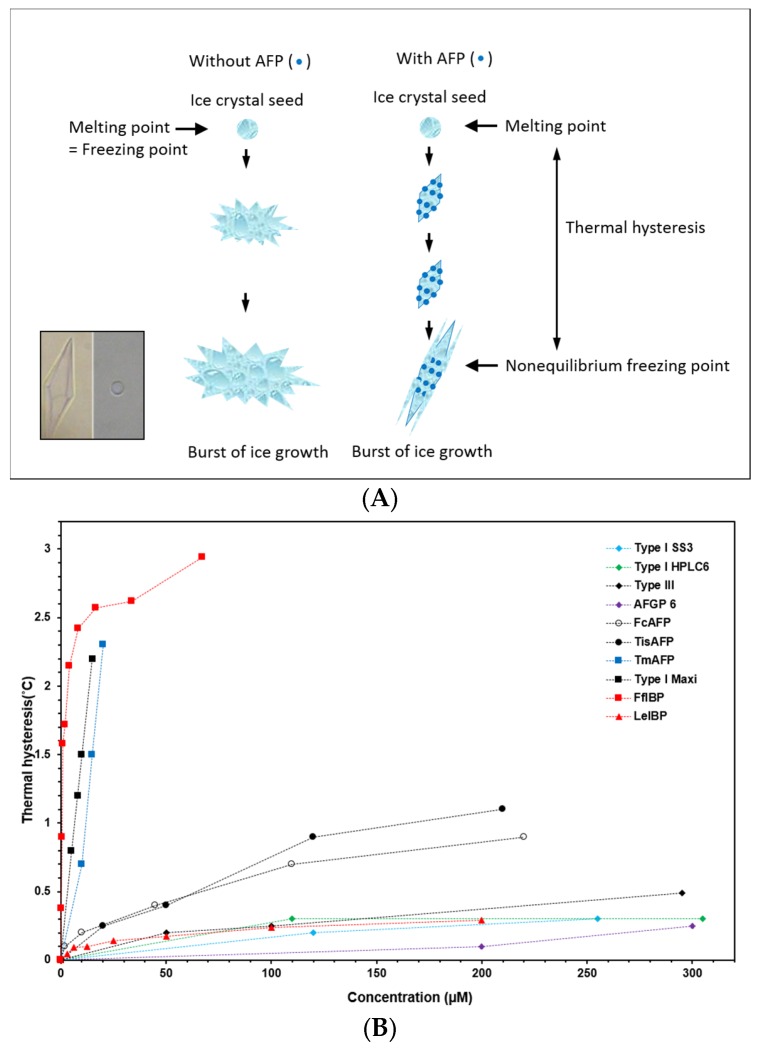Figure 2.
(A) Cartoon illustration of TH phenomenon. In the left panel, the ice starts to grow rapidly as temperature drops. However, as shown in the right panel, AFPs adsorb irreversibly on to the specific planes of ice surface, inhibiting the further growth of ice until the temperature reaches nonequilibrium freezing point. This adsorption-inhibition mechanism by AFPs separates melting and freezing points of solution. The inset shows the bipyramidal and lemon ice morphologies created by moderately active type I AFP (left) and hyperactive FfIBP (right), respectively; (B) Comparison of TH activities of AFPs from various organisms. TH activity of marine-derived FfIBP (from Flavobacterium frigoris), and type I-Hyp (from Pseudopleuronectes americanus) are comparable to hyperactive insect and fungal AFPs, TmAFP and TisAFP, respectively, of non-marine origin. Other marine AFPs are moderately. Abbreviations are as follows: TmAFP, Tenebrio molitor AFP; TisAFP, Thyphula ishikariensis AFP; FcAFP, Fragilariopsis cylindrus AFP; and LeIBP, Glaciozyma (formerly known as Leucosporidium) sp. IBP.

